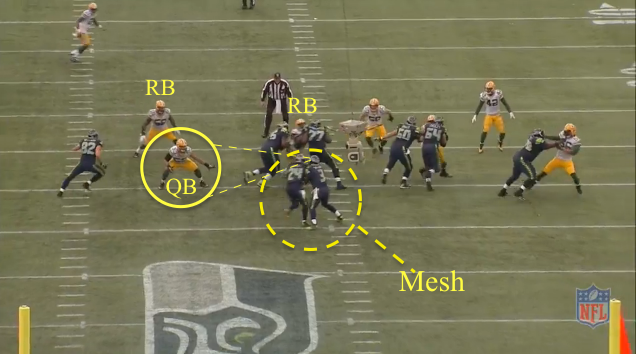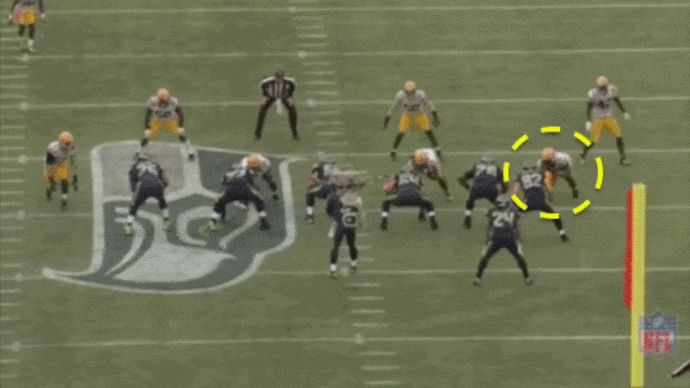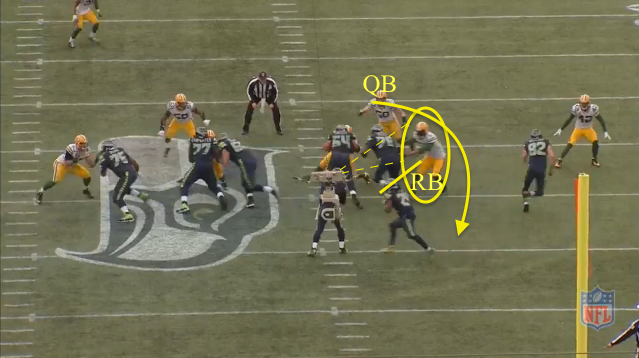How to Put the Uncertainty Back on the Quarterback
Seattle receivers Doug Baldwin and Jermaine Kearse had seemed unlikely to be as productive against New England defensive backs Brandon Browner and Darrelle Revis in that Super Bowl Sunday.
The Patriots had boasted the second-best secondary in the league, excelling at shutting down opposing offenses. This meant Seattle had to rely heavily on their running game to make headway.
It was common knowledge that Marshawn Lynch would be pivotal in driving that strategy.
At 5 11 and 215 pounds, Lynch ran with the force of a much heavier player, often necessitating multiple defenders to bring him down.
He was an undeniable focal point and a significant challenge for New England.
Though many teams focused their defensive strategies on stopping Lynch, they often overlooked the running capabilities of quarterback Russell Wilson.
Wilson, with his ability to evade direct hits and surprising speed in open fields, had amassed over 800 rushing yards that season.
The bulk of his ground production stemmed from the read-option play, a tactic that had continued to baffle NFL teams as they struggled to neutralize Seattle’s offensive approach.
Alex Smith asked me what our BYU defense did to limit the read option’s success. I told him it was simple: we would change up responsibilities to the quarterback and running back.
Bill Belichick, renowned for his innovation and strategic prowess in NFL history, seemed like someone who would have a plan to counter the read-option.
Having previously encountered the University of Utah’s read-option while playing at Brigham Young during 2003-04, insights were gained into how this offense could be contained.
At the 2005 NFL rookie symposium, the quarterback of those Utah teams, Alex Smith, had inquired about the defensive strategies employed by BYU to limit the read-option’s effectiveness.
The response was simple: altering responsibilities between the quarterback and running back.
Defending against the read-option demanded defensive discipline.
Each player was assigned specific responsibilities, with certain players designated to handle particular aspects of the play.
Typically, the end defender on the line of scrimmage, whether a linebacker or end, was tasked with managing the quarterback, while inside linebackers and defensive tackles tracked the running back.
The quarterback’s role involved reading the defense to decide whether to keep the ball or execute a handoff.
If the end defender stayed wide, the quarterback would hand off; if the end moved inside, the quarterback would keep it. However, identifying this wasn’t straightforward.
Quarterbacks like Wilson possessed the ability to deceive, making it seem at the mesh point that the handoff had occurred when it hadn’t, showcasing a magician-like skill.

The defensive end or outside linebacker, tasked with managing the quarterback, often reacted instinctively, sometimes veering towards chasing down or momentarily misstepping toward the running back.
This subtle move was adequate to deceive quarterbacks like Wilson with the advantage of outmaneuvering the end or outside linebacker around the corner, creating an opportunity to gain an edge in the play.

To enhance the defensive end’s ability to read the play swiftly while creating confusion for the quarterback, the Patriots could have altered the responsibilities by interchanging the assignment of the end defender on the line of scrimmage with the inside linebacker.
Once identified as a read-option play, the end defender would immediately crash to disrupt the running back.
Simultaneously, the inside linebacker would aggressively attack the edge, understanding that if the quarterback witnessed the end crashing, he would keep the ball.
This strategic adjustment allowed for a fast and aggressive defensive approach, aligning with the natural tendencies of defensive players.
Consequently, it was challenging for the quarterback to determine which player to read for his mesh point decision.

For facilitating the defensive end’s swift reactions while reading the play on the move and adding to the quarterback’s confusion, the Patriots could opt for a change in strategy by swapping the responsibilities between the end man on the line of scrimmage and the inside linebacker.
Upon recognizing the read-option play, the end defender should swiftly crash to disrupt the running back.
Simultaneously, the inside linebacker would charge off the edge, anticipating that he would likely retain possession of the ball once the quarterback observes the end crashing.
This approach encouraged fast and aggressive play, aligning with the instincts of defensive players.
As a result, the quarterback would face increased difficulty in determining which player to read, complicating his decision-making during the mesh point.

